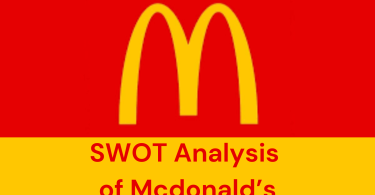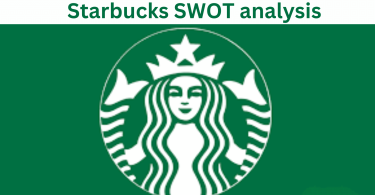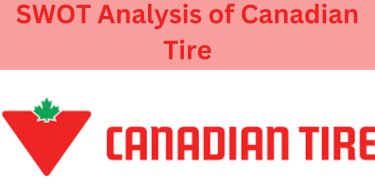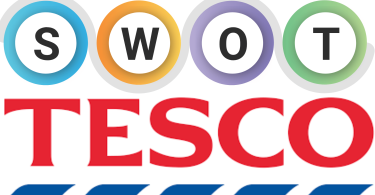As the airline industry continues to thrive and evolve, companies need to position themselves strategically to remain competitive.
Southwest Airlines, one of the industry’s global giants, is no exception. In this article, we delve into the heart of this American empire through an in-depth SWOT analysis.
This strategic analysis framework will highlight the strengths that propel Southwest Airlines to success, the weaknesses it must overcome, the opportunities to grab, and the threats to anticipate.
To understand the key factors behind its success and the challenges facing Southwest Airlines today, we have conducted an internal and external analysis of this popular brand using the SWOT framework.
In this article, you’ll discover the results of Southwest Airlines’s SWOT analysis. In other words, all the strengths, weaknesses, opportunities, and threats that shape this iconic brand and the global airline industry.
Southwest Airlines Overview
Southwest Airlines is a major American low-cost airline headquartered in Dallas, Texas. Established in 1967, it’s recognized as one of the largest and most successful low-cost carriers globally.
One of its key distinguishing features is its point-to-point routes rather than the traditional hub-and-spoke model, allowing for more direct flights and operational efficiency. The airline initially operated within the state of Texas and gradually expanded its services across the United States.
Southwest Airlines is known for its commitment to offering low fares, exceptional customer service, and a no-frills, straightforward approach to air travel. Over the years, it has maintained a strong emphasis on operational efficiency and cost control, which contributes to its ability to offer competitive prices.
The company has built a reputation for a unique company culture that emphasizes employee satisfaction and customer service, often recognized for its friendly and personable flight crews.
Southwest’s fleet primarily consists of Boeing 737 aircraft and its extensive domestic network serves numerous destinations across the United States and some international locations.
Overall, Southwest Airlines has solidified its position as a major player in the airline industry, leveraging its operational model, customer-centric approach, and cost-effective strategies to maintain its competitive edge.
We have conducted a literature review on the global airline industry. In parallel, we have conducted an in-depth analysis of the Southwest Airlines company’s website and key figures.
As a result, we present below the synthesis of Southwest Airlines SWOT analysis.
The internal analysis of Southwest Airlines
SWOT is a strategic planning tool that allows us to analyze a company’s strengths and weaknesses, determine its future expansion strategies, and consider the opportunities and threats of its current markets.
In this section, we will focus on analyzing the strengths and weaknesses of Southwest Airlines to discover the various internal factors.
The strengths of Southwest Airlines
Southwest Airlines is a renowned low-cost carrier that has established itself as a formidable player in the aviation industry. The company’s success can be attributed to its distinctive strengths that set it apart from its competitors.
Here’s a comprehensive overview of Southwest Airlines’ key strengths:
Low-cost Business Model:
Southwest Airlines is widely recognized for its low-cost fares, which are significantly lower than those offered by traditional airlines.
This competitive advantage is achieved through various cost-cutting measures, such as operating a single aircraft type (Boeing 737), utilizing point-to-point routing, and maintaining high aircraft utilization rates.
Strong Brand Recognition:
Southwest Airlines has cultivated a strong brand reputation for its commitment to customer satisfaction, friendly service, and a fun-loving atmosphere.
This positive brand image has earned the airline a loyal customer base and a competitive edge in the industry.
Extensive Route Network:
Southwest Airlines boasts a comprehensive route network that spans across the United States, Mexico, and the Caribbean.
The airline’s focus on point-to-point routes allows for direct flights between smaller cities, catering to the needs of a broader range of travelers.
Operational Efficiency:
Southwest Airlines maintains a reputation for operational efficiency, evident in its on-time performance, low baggage handling rates, and quick turnaround times between flights.
This efficiency contributes to lower operating costs and a more enjoyable travel experience for passengers.
Employee Engagement:
Southwest Airlines fosters a strong corporate culture that emphasizes employee engagement and empowerment.
The company’s “LUV” philosophy, centered on Love, Unconditional Regard, and Values, promotes a positive work environment and contributes to a dedicated workforce.
Community Involvement:
Southwest Airlines actively engages with the communities it serves through various philanthropic initiatives and sponsorships.
This commitment to social responsibility enhances the airline’s brand image and strengthens its connection with local communities.
Financial Stability:
Southwest Airlines has consistently maintained financial stability, demonstrating resilience during economic downturns.
This financial strength enables the company to invest in growth opportunities and weather industry challenges.
Technological Advancements:
Southwest Airlines embraces technological advancements to enhance its operations and customer experience. The airline has implemented innovative solutions for mobile check-in, self-service kiosks, and in-flight entertainment, keeping pace with evolving traveler expectations.
Environmental Sustainability:
Southwest Airlines is committed to environmental sustainability, implementing initiatives to reduce fuel consumption, minimize waste, and promote eco-friendly practices.
This commitment aligns with growing environmental concerns among travelers.
Adaptations to Market Trends:
Southwest Airlines demonstrates agility in adapting to evolving market trends and consumer preferences. The airline has expanded its ancillary services and introduced new fare options to cater to diverse traveler needs.
In summary, Southwest Airlines’ strengths lie in its unwavering commitment to low fares, operational efficiency, customer satisfaction, employee engagement, and community involvement.
These strengths have propelled the airline to become a leading force in the aviation industry, consistently outperforming its competitors and earning the loyalty of travelers worldwide.
The weaknesses of Southwest Airlines
Despite its numerous strengths, Southwest Airlines also faces certain weaknesses that could hinder its growth and competitive position. These weaknesses include:
Limited International Presence:
Southwest Airlines’ primary focus on domestic routes limits its ability to compete with larger airlines that offer extensive international networks.
This concentration on the U.S. market could restrict the airline’s growth potential and revenue streams.
Overdependence on Boeing 737s:
Southwest Airlines’ exclusive reliance on a single aircraft type, the Boeing 737, makes it vulnerable to supply chain disruptions and potential safety concerns.
While this strategy has contributed to operational efficiency, it also exposes the airline to risks associated with a single aircraft manufacturer.
Limited Passenger Amenities:
Southwest Airlines’ focus on low-cost fares often comes at the expense of amenities typically offered by traditional airlines, such as assigned seating, in-flight meals, and first-class cabins.
This lack of differentiation could deter passengers seeking a more premium travel experience.
Labor Relations and Union Issues:
Southwest Airlines has historically faced labor relations challenges, particularly with its flight attendants’ union. These disputes can lead to disruptions, negative publicity, and increased operating costs.
Limited Route Flexibility:
Southwest Airlines’ point-to-point routing strategy, while efficient, restricts its ability to offer direct flights to smaller or less frequently traveled destinations.
This could limit the airline’s appeal to travelers seeking direct connections to specific locations.
Potential for Cost-Cutting Fatigue:
Southwest Airlines’ long-standing commitment to low fares could lead to cost-cutting fatigue, making it difficult to maintain its competitive edge without compromising on quality or service.
Vulnerability to Fuel Price Fluctuations:
Southwest Airlines’ reliance on a single aircraft type and point-to-point routing makes it more susceptible to fuel price fluctuations, potentially impacting profitability and ticket prices.
Limited Cargo Capacity:
Southwest Airlines’ focus on passenger travel limits its cargo capacity compared to airlines that offer dedicated cargo services.
This could restrict revenue opportunities from the growing e-commerce and cargo transportation sectors.
Potential for Brand Dilution:
Southwest Airlines’ expansion into new markets could dilute its brand identity and weaken its association with its core low-cost, point-to-point strategy.
Addressing these weaknesses could help Southwest Airlines maintain its position as a leading low-cost carrier and continue to grow and thrive in the competitive aviation industry.
Let’s turn now to the results of our external analysis of the global airline industry.
The external analysis of Southwest Airlines
The primary goal of external analysis is to identify and assess the external factors that influence a company’s business environment.
The opportunities of Southwest Airlines
The global airline industry is a dynamic and ever-evolving sector, constantly adapting to changing consumer demands, technological advancements, and economic conditions.
Despite the challenges faced during the COVID-19 pandemic, the industry is exhibiting signs of recovery and presenting promising opportunities for growth.
Current Opportunities in the Global Airline Industry:
- Rebound of Travel Demand: As travel restrictions ease and vaccination rates increase, consumer confidence in air travel is steadily returning. This surge in travel demand presents a significant opportunity for airlines to regain lost revenue and expand their operations.
- Emerging Market Growth: Developing economies in Asia, Africa, and Latin America are experiencing rapid urbanization and rising disposable incomes, leading to a growing demand for air travel. Airlines can capture this opportunity by expanding their routes and tailoring their services to the specific needs of these markets.
- Cargo Transportation Growth: The e-commerce boom has fueled the demand for air cargo services. Airlines can capitalize on this trend by investing in cargo capacity and developing efficient logistics solutions to meet the growing demand for air cargo transportation.
- Ancillary Revenue Opportunities: Airlines can generate additional revenue streams by expanding their ancillary services, such as baggage fees, seat selection fees, and premium onboard experiences.
- Technology-Enabled Efficiency: Technological advancements can enhance operational efficiency and improve the customer experience. Airlines can implement data analytics, artificial intelligence, and mobile technologies to optimize route planning, manage passenger traffic, and personalize customer interactions.
Potential Opportunities in the Global Airline Industry:
- Sustainable Aviation Fuels (SAF): The development and adoption of SAF can reduce the airline industry’s environmental footprint and appeal to environmentally conscious consumers.
- Urban Air Mobility (UAM): UAM technologies, such as drones and electric vertical takeoff and landing (eVTOL) aircraft, hold the potential to revolutionize short-haul transportation, offering new opportunities for airlines to connect passengers to city centers and airports.
- Hyper- personalization: Airlines can leverage data analytics and artificial intelligence to personalize the travel experience for each passenger, tailoring everything from seat assignments and meal preferences to in-flight entertainment and destination recommendations.
- Integrated Travel Ecosystems: Airlines can partner with other travel providers, such as hotels, car rental companies, and tour operators, to create seamless travel experiences and offer comprehensive travel packages.
- Data Monetization: Airlines possess valuable data on passenger behavior, travel patterns, and preferences. They can monetize this data by providing insights into other industries, such as tourism, hospitality, and retail.
The global airline industry is poised for continued growth and transformation as technological advancements, changing consumer preferences, and environmental concerns shape the future of air travel.
Airlines that can embrace innovation, adapt to changing market dynamics, and prioritize sustainability will be well-positioned to capture the opportunities that lie ahead.
The threats of Southwest Airlines
The global airline industry faces numerous current and potential threats and risks that can significantly impact its operations, profitability, and future growth.
Understanding and addressing these challenges is crucial for airlines to maintain their resilience and success in this dynamic and competitive industry.
Current Threats and Risks in the Global Airline Industry:
- Economic Volatility and Geopolitical Tensions: Economic downturns, fluctuations in fuel prices, and geopolitical tensions can disrupt travel demand, increase operating costs, and destabilize regional markets, posing significant challenges to airlines.
- Fuel Price Fluctuations: Jet fuel is a major expense for airlines, and fluctuations in fuel prices can have a substantial impact on their profitability. Airlines are exposed to the risks of rising fuel costs, which can erode their margins and necessitate fare increases.
- Labor Shortages and Union Disputes: The aviation industry faces labor shortages, particularly in pilot and flight attendant positions. These shortages can lead to higher labor costs, operational disruptions, and potential service quality issues. Additionally, labor unions can exert pressure on airlines for higher wages and improved working conditions, which can impact profitability.
- Infrastructure Constraints and Airport Congestion: Aging and congested airport infrastructure can lead to delays, cancellations, and increased operating costs for airlines. These infrastructure limitations can also hinder airlines’ ability to expand their routes and services.
- Cybersecurity Threats and Data Breaches: Airlines are increasingly reliant on digital technologies, making them vulnerable to cybersecurity threats and data breaches. These incidents can damage their reputation, disrupt operations, and lead to financial losses.
- Regulatory Changes and Environmental Concerns: Airlines must comply with evolving regulations and address environmental concerns related to emissions and sustainability. These factors can increase costs and impose operational restrictions.
- Increased Competition from Low-Cost Carriers: The rise of other low-cost carriers intensifies competition in the airline industry, putting pressure on Southwest Airlines to maintain its competitive advantage and attract customers.
Potential Threats and Risks in the Global Airline Industry:
- Emergence of New Technologies: Disruptive technologies, such as autonomous aircraft and high-speed rail networks, could potentially challenge the traditional airline business model and pose a threat to their market share.
- Shifting Consumer Preferences: Changing consumer preferences, such as increased demand for personalized experiences and sustainable travel options, could require airlines to adapt their services and offerings to remain competitive.
- Pandemics and Public Health Crises: Future pandemics or public health emergencies could once again disrupt travel demand, impose travel restrictions, and have a significant negative impact on the airline industry.
- Climate Change and Extreme Weather Events: Climate change and extreme weather events can lead to increased flight disruptions, cancellations, and insurance costs for airlines, posing operational and financial challenges.
- Geopolitical Conflicts and Regional Instability: Geopolitical conflicts and regional instability can disrupt travel routes, increase security concerns, and deter travelers, posing risks to airlines operating in these regions.
SWOT Analysis Matrix of Southwest Airlines
To summarize the results of the Southwest Airlines SWOT analysis, we present the following SWOT matrix:

Conclusion
In conclusion, the SWOT analysis of Southwest Airlines presents a holistic view of the company’s position in the aviation industry.
Despite facing challenges inherent in the market, Southwest Airlines leverages its robust strengths, such as a strong brand reputation, operational efficiency, and a unique corporate culture, to maintain its competitive edge.
However, like any airline, Southwest has its weaknesses and must address them to sustain growth. With a focus on mitigating weaknesses and capitalizing on opportunities such as expanding routes or adapting to evolving customer needs, Southwest can further solidify its position in the market.
Moreover, the analysis highlights external threats that the airline faces, emphasizing the importance of strategic adaptability to navigate unpredictable industry shifts, regulatory changes, and economic fluctuations.
Overall, Southwest Airlines’ SWOT analysis underscores the significance of leveraging strengths, mitigating weaknesses, seizing opportunities, and effectively managing threats to ensure sustained success and relevance in the dynamic aviation landscape.
SWOT Analysis Examples 2024
There is no better way to understand how to conduct a SWOT analysis at your company than with a concrete example.
Below you will find our free, up-to-date, and concrete examples of SWOT analyses of large companies and multinationals conducted in 2024.












Leave a Comment